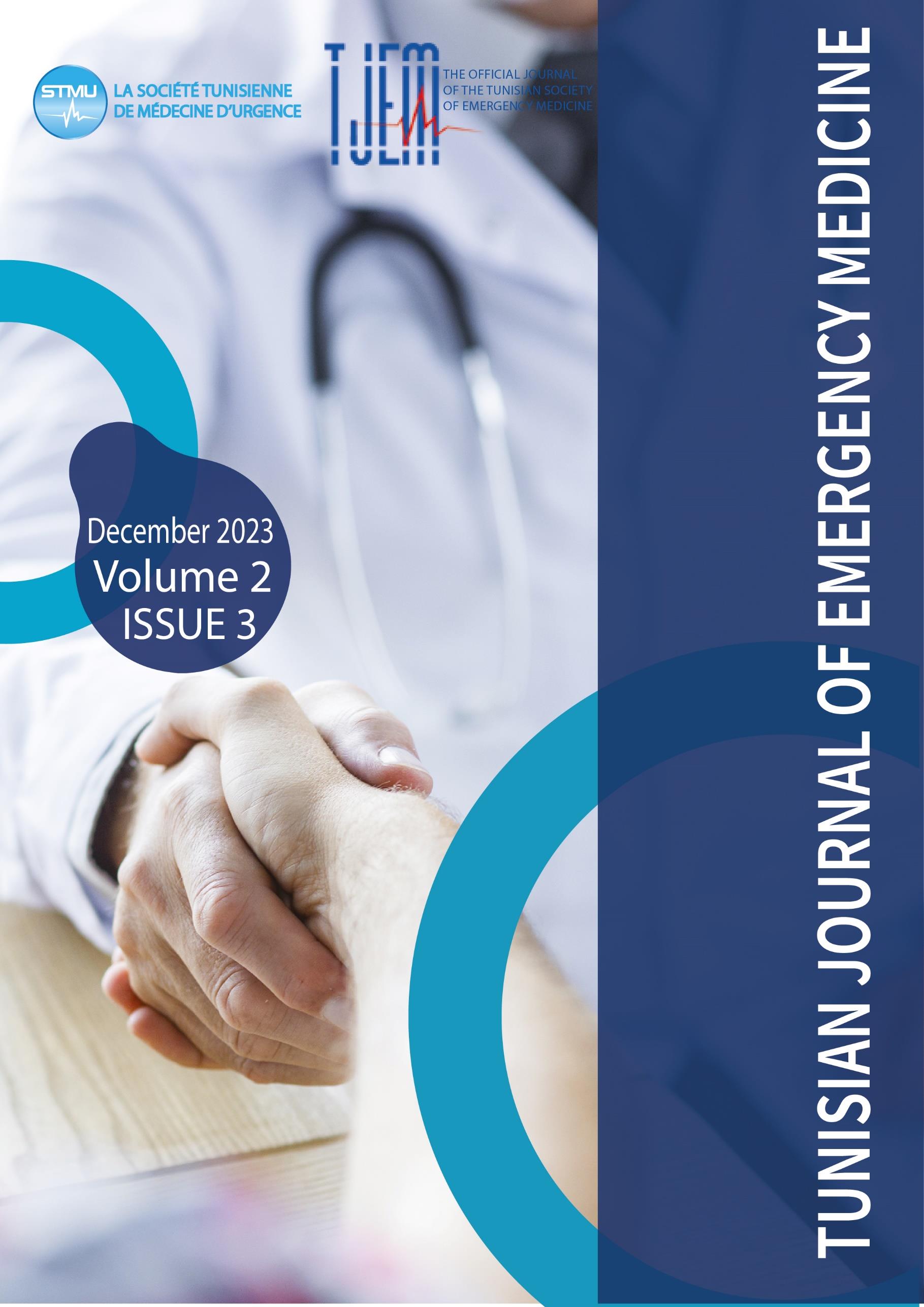Evaluation of initial medical certificates delivered by emergency doctors
Wiem Ben Amar 1,3, Manel Rebai 2,3, Hela Siala 1,3, Hanen Dhouib 1,3, F. Daoud 1,3, Zouheir Hammami 1,3, Samir Maatoug 1,3.
- Authors
-
-
Wiem Ben AMAR
,
-
- Keywords:
- Trauma, Incapacity, Medical liability, Initial medical certificate
- Abstract
-
OBJECTIVES: The initial medical certificate (IMC) is the first document delivered to an injured person. In this work, we propose to analyze the quality redaction of IMC written by emergency doctors and to propose writing recommendations in order to guarantee a better quality of IMC. METHODS: This is a retrospective and descriptive study of all IMCs written by emergency doctors in Mahares Emergency Unit and collected at the regional Hospital of Mahres in Sfax, Tunisia, over a period of 22 months (January 1, 2019 - October 31, 2020). We included initial medical certificates issued for intentional assault and battery (assaults) and unintentional (primarily traffic accidents, workplace accidents,). We excluded all initial medical certificates that were totally illegible. RESULTS: During this period, we collected 506 IMCs. They were all hand written according to the pre-established model for public sector. 83% of the certificates were perfectly legible. 46% of the physicians used abbreviations in the IMCs. The surname and first name of the physician were mentioned on 457 certificates (90% of the cases) and his complete identity with his grade and professional address in 6.7% of the cases only. The signature of the physician was present in the vast majority of the certificates (97%), and the stamp was present in only 8% of the cases. The victim's identification (name and surname) was noted in almost all the certificates. However, neither the address nor the occupation of the victim was included in 506 certificates. The majority of prescribing physicians had mentioned the date of clinical examination, the date of the event, as well as the date of writing the IMC (84.8%). The duration of total temporary disability was specified in 91.3% of the cases. CONCLUSION: In our study, the IMC is generally imperfectly and insufficiently written by the doctor. This can have serious medico-legal repercussions for both victim and doctor. Indeed, the victim may lose his rights to compensation and the doctor may be held medical liability.
- Downloads
- Published
- 12-12-2023
- Section
- Retrospective or cross-sectional study
- License
-
Copyright (c) 2023 Tunisian Journal of Emergency Medicine

This work is licensed under a Creative Commons Attribution-NonCommercial-ShareAlike 4.0 International License.


